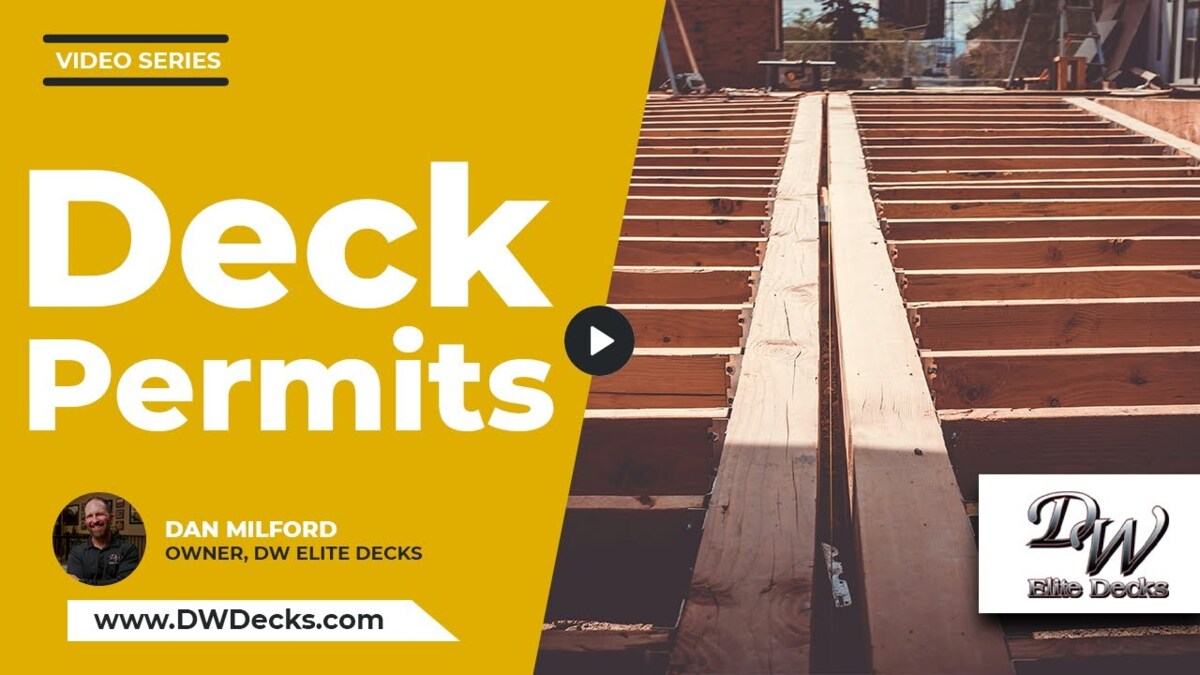Most deck failures occur at the connection to the house, rather than from loose boards or leaning posts. A licensed and insured deck builder knows how to prevent this by using the right fasteners, flashing, and construction methods. Without those, water can seep in, cause rot, and weaken the structure over time.
We follow local codes, pull permits, and use materials that meet today’s standards. These steps keep your deck safe, durable, and up to code.
What Can Go Wrong Without a Licensed and Insured Deck Builder?
Weak House Connection = Collapse Risk
One of the most dangerous issues we see is a poorly attached ledger board. That’s the piece of wood that connects the deck to your home. If it’s not installed with the right fasteners or flashing, water can seep in, rot the wood, and cause the whole deck to fall away from the house.
Key things we check:
- Proper flashing to prevent water entry
- Strong lag bolts or structural screws
- Solid framing behind the ledger
- Signs of rot on the siding or rim joist
Pro Tip: If your deck is older, check for signs of rot under or around the ledger board. That’s where most collapses happen.
Unsafe Guardrails and Stairs
We also see a lot of unsafe railings and stairs. Guardrails need to hold 200 lbs of force from any direction. If they’re just nailed into the side of the deck or the balusters are loose, someone could fall off, especially on tall decks.
What we look for:
- Guardrail posts are properly fastened to the framing
- Correct number of stringers under stairs
- Stair treads attached to the code with proper hardware
Need expert help with your deck project? Contact DW Decks for a free consultation. We’re licensed, insured, and we do it right the first time.
How a Licensed and Insured Deck Builder Protects You
They Follow Code and Pull Permits
We always pull a building permit before work begins. It’s not just paperwork; it’s proof that a third-party inspector will check our work and confirm it meets code. That protects both you and your home.
Permits must be:
- Pulled before work begins
- Closed out after final inspection
- Verified with your city’s building department
If a contractor tells you they’ll pull it later, that’s a red flag. Work must stop until it’s issued.
Key Takeaway: A closed permit is your proof that your deck was built to code. Keep that record for insurance and resale.
They Use the Right Hardware and Materials
Decks aren’t just built with nails and wood. We use structural screws, joist hangers, L-brackets, and treated lumber that meets today’s codes. Every post, beam, and joist has to be connected correctly. A licensed builder knows this and won’t cut corners.
We make sure:
- Joists have hangers and are properly spaced
- Posts are notched and bolted to beams
- Railings meet height and strength requirements
How to Check if a Contractor is Licensed and Insured
It’s easy to check if your contractor is qualified. Here’s what we recommend before signing any agreement:
- Ask for their license number.
Verify it with your city or state. - Request proof of insurance.
Look for general liability and workers’ comp. - Check the permit history.
Some cities let you search by address. - Read local reviews.
Look for recent feedback about inspections or code issues.
Pro Tip: Always confirm that the permit was not just pulled, but closed. That means the city signed off on the final inspection.
Final Thoughts: Why It Matters
Hiring a licensed and insured deck builder keeps your home safe, your project legal, and your investment protected. From structural hardware to code inspections, we make sure every part of your deck meets today’s standards.
If you’re building or replacing a deck, don’t take shortcuts. A few checks now can prevent serious damage later.
Ready to get started? Call DW Decks today for a free quote. We’ll make sure your deck is built safe, strong, and up to code.







